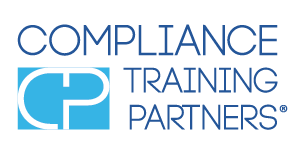Being Prepared for OSHA Inspections
OSHA’s primary concern is the safety of your dental team, which would include all assistants, hygienists, doctors and business office staff. Compliance with OSHA regulations makes the workplace safer for everyone, and this should be emphasized when you discuss with your staff the need for annual required training.
Assign Responsibility
To begin your compliance efforts, choose someone to be your Safety Compliance Coordinator (SCC). A trusted and organized dental assistant, hygienist or officer manager is suggested. The SCC should review and implement one step at a time, using the following outline.
Hazard Communication Standard
The Hazard Communication Standard deals with hazardous chemicals in the workplace. In dentistry, these include disinfectants, restorative materials, acids, cleaners, impression materials, etc. The Standard requires a written chemical safety plan, material safety data sheets for each hazardous chemical/product, labeling of these potentially hazardous products and training of employees who are exposed to them.
Bloodborne Disease Pathogens Standard
Requirements include having a written Exposure Control Plan, providing the Hepatitis B immunization at no cost to exposed employees, and making available personal protective equipment (mask, gloves, safety eyewear, long-sleeved protective clothing). In addition, employees must have inter-departmental meetings at least annually to consider safer medical devices. Employees must understand the modes of transmission for bloodborne diseases such as Hepatitis B, Hepatitis C, and HIV. They must also know what to do in the event of a needle stick or other exposure incident and have access to proper follow-up medical care.
Electrical Safety
Dental facilities make considerable use of electrical devices including autoclaves, instrument washers, ultrasonic cleaners, model trimmers, lathes and curing lights. It is important that no extension cords be used, that plugs and cords are checked for wear/ intact insulation and that plugs match their outlets (e.g., three-pronged). In addition, cords should not be twisted around each other, but should run in parallel.
Ionizing Radiation
OSHA regulations require an employer to evaluate their facility for any potential radiation hazard and provide employees with the appropriate training and monitoring equipment. While some states require the wearing of radiation badges by dental workers, others do not. It is recommended though, that workers who take radiographs wear monitoring badges.
Means of Egress
There must be at least two ways of getting in and out of every building. Exits must have no locks or fastening devices that may prevent free escape and must be clearly visible and conspicuously with illuminated or glow-in-the-dark signs. In the event of power failure, reliable emergency lighting must also be available for all exits and signs.
Walking and Working Surfaces
This regulation requires all rooms and passageways to be kept clean, orderly and sanitary. All aisles and hallways must be kept free of debris/clutter and floors must be kept clean and dry. Additionally, stairways must have railings/guardrails and any ladders used must be OSHA approved.
Ventilation
Ventilation in the dental office is very important, as a variety of potentially hazardous substances can become airborne and cause illness or injury. One of the best recommendations is to put the heating/cooling system fan in the “on” position during working hours to allow for adequate turnover of air in the office. In addition, encourage the use of high-volume evacuation during restorative procedures or any other procedures involving rotary instruments. If working with monomers or other volatile liquids in the lab, use the vent fan or hood. For those offices that use nitrous oxide, remember to use your scavenger system and test for nitrous levels in the air on a quarterly basis.
Medical and First Aid
The requirements include having medical personnel available to provide emergency care if needed or to have an employee(s) trained in first aid available during working hours. A first aid kit should be available for self-aid, as well as a CPR Microshield to use when performing resuscitation. Remember to have emergency numbers posted on the phone and to have an eyewash station installed for flushing of the eyes.
Fire Safety
OSHA requires fire safety training. This training must include reviewing a list of all flammables in the workplace and their possible ignition sources. Employees must also know what their responsibilities are in the event of fire and the location of a safe meeting place after evacuation.
Recordkeeping
Requirements include employee medical records, records of training and environmental monitoring records (results of nitrous oxide and radiation testing).
Protection and Peace of Mind
Achieving compliance with OSHA regulations not only protects your employees but mitigates the risk you have as a business owner.
Karson L. Carpenter D.D.S serves as president of Compliance Training Partners, a company dedicated to compliance issues in the dental office.

